
Magnificent views of Mt. Makiling in 8×8’s MV House
There are two common tendencies when it comes to designing houses in local subdivisions: First is to follow the subdivision’s building regulations while working around the prescribed theme to inject a sense of individuality. The result is an eclectic fusion of architectural styles. Second is to completely reject the village theme, and more often than not, the building regulations as well, for the purpose of standing out. The result is anarchy. Either way, no one seems to mind. Majority of homeowners kiss their ridiculously affordable construction bonds goodbye for the distinction of having their very own Miesian-Zahan-Mediterranean-Pinoy house. The MV House in Laguna by 8×8 Design Studio is a different story.
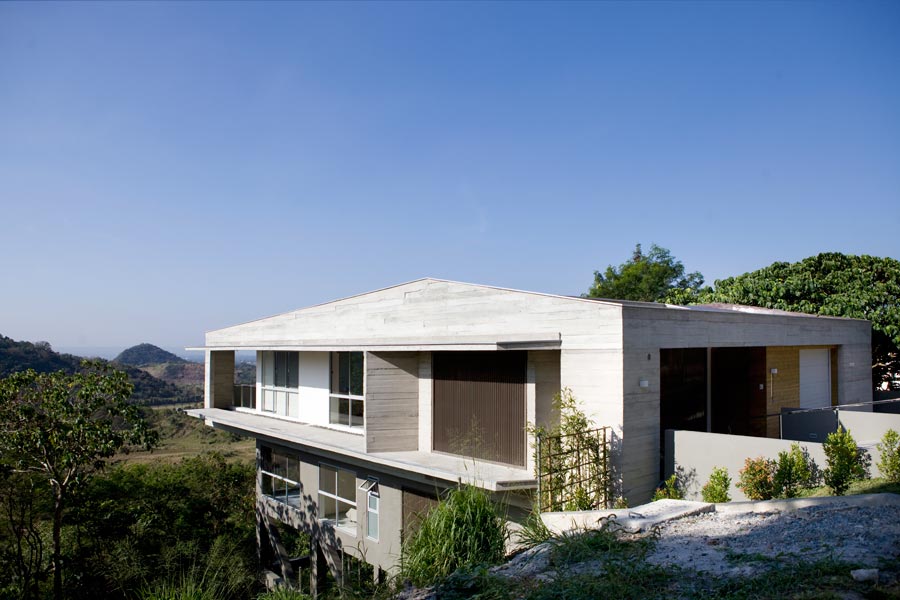
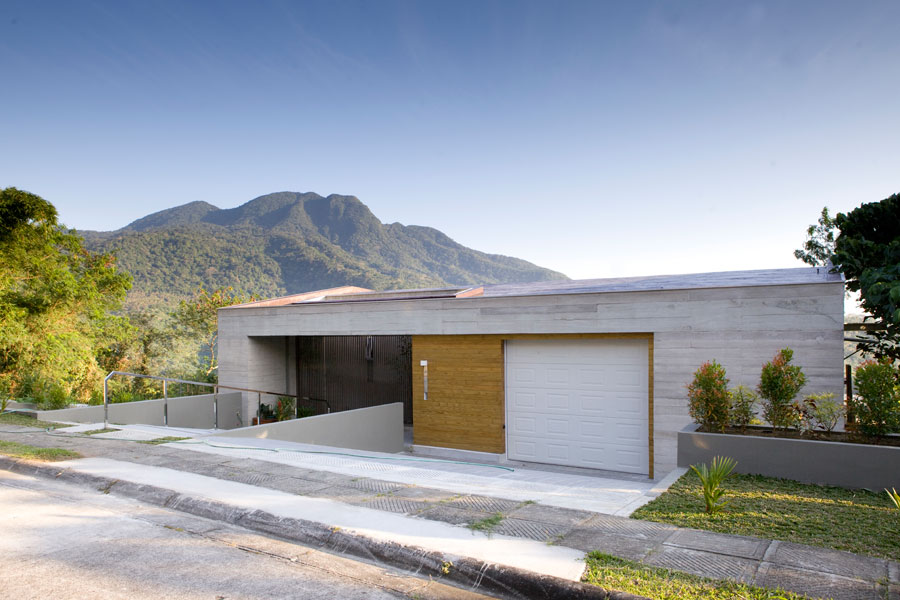
Visitors don’t need profound rationalizations or jargon in order to be impressed with the architecture, which is straightforward inside out. Its young designers, Adrian Alfonso and Pearl Robles, have been earning a name for themselves for their systematic design strategy. Simply put, they analyze the needs of the client, and program or plan the spaces of the house according to those needs, while addressing tropical and site-specific conditions. Alfonso and Robles were initially daunted by the sloping site that drops 18 meters below the main road.

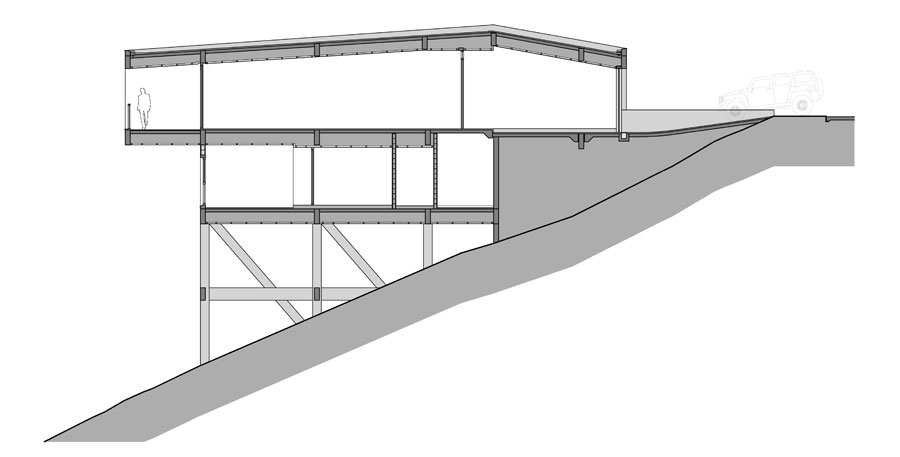
Ultimately, the project became an exercise in exploring vertical configurations, and how to take advantage of its dream setting, with its views of majestic Mt. Makiling, a city skyline and a lake from afar. With the owners being retirees, Alfonso and Robles segregated the zones into two distinct volumes: a volume where the users will spend most of their time, and another volume for ancillary spaces.
[one_third padding=”0 20px 10x 0″]
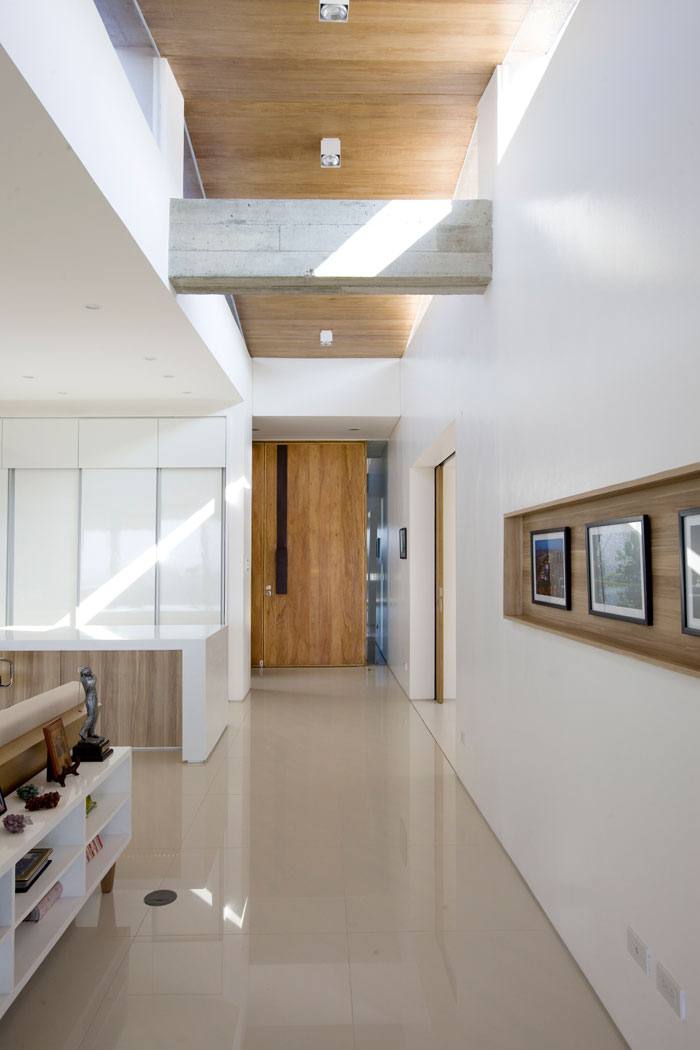
The arrival experience is less ceremonial than it is practical—one has to go through the garage to reach the front door and onto the main living space, where one is reminded that the house’s location makes it truly special. The main living space is on the upper level and includes the living, dining, kitchen areas and bedrooms of the client. The integration of kitchen, counter and dining components into one contiguous area that expands into the living area suggests a modern and casual lifestyle that I did not expect from what I knew of the owners.
The mystical Mt. Makiling makes its presence known in almost all the areas of the home—Alfonso and Robles have created a house that is an excellent ‘viewfinder’ for its appreciation. The living space expands out to a generous balcony space where one can soak in breathtaking views of the mountain. “Framing views” is an overused description in design concepts, but in this case, it is an understatement—the house directs one’s attention to its object of adoration and unreservedly glorifies it.

The mountain view is shared by the ancillary volume underneath, which is comprised of service and utility areas and special spaces. Two combinable guest rooms expand to a lanai that opens to the same views as the balcony above. Since a lawn area isn’t possible because of the steeply sloping site, it is here that a successful integration of interior and exterior spaces is achieved. The lanai is convertible into a space for entertaining guests, and is breezy and surrounded by window screen panels that allow air to flow through to the interior.
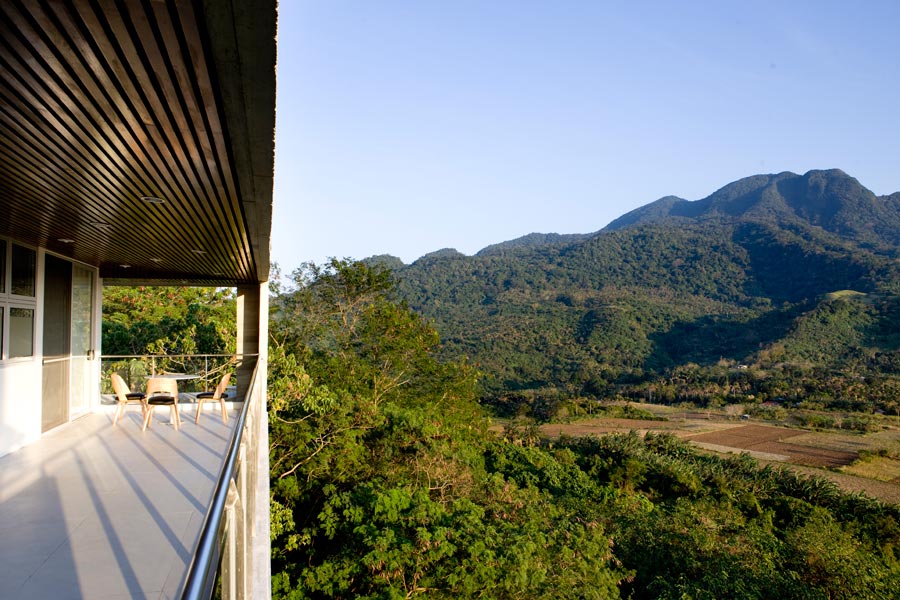
Without meaning to garnish my observations with a slew of design jargon, I’d like to call attention to 8×8’s use of shell tactics in the design:
The two main volumes can be perceived as encased by another volume that acts as secondary shell. This shell system works in three ways: as a protective element, as an informal space generator, and as a secondary, expressive and functional screen. The two masses are stacked one upon the other. The program above has a wider footprint, providing an overhang over the floor below, protecting the lanai from sun and strong rain—a smart answer to Philippine climate conditions that dictate that Filipino houses should always have long eaves and a steep roof slope.
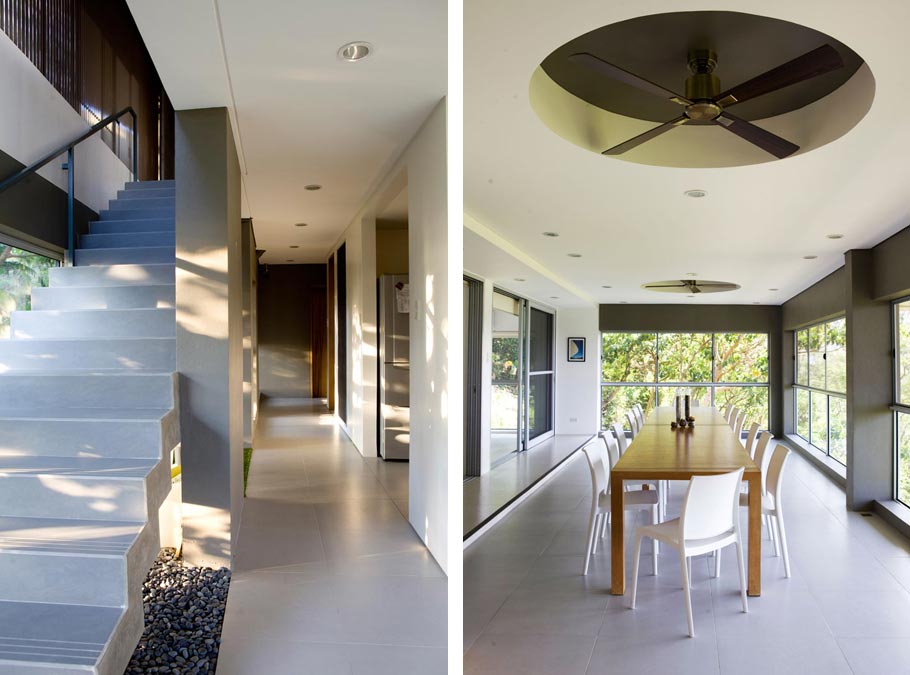
These two volumes are differentiated by contrasting finishes. Alfonso refers to the structural components as arms holding up the two masses together. The columnation, or system of columns, enables the house to expand in the future and has decorative diagonal bracings that provide a sense of movement to the structure. The entire structure can be perceived as a volume within a volume, a strategy that is as clear as the outcome, intelligent, uncomplicated and pragmatic. ![]()
READ MORE: Jim Caumeron guts a house to build a treehouse inside
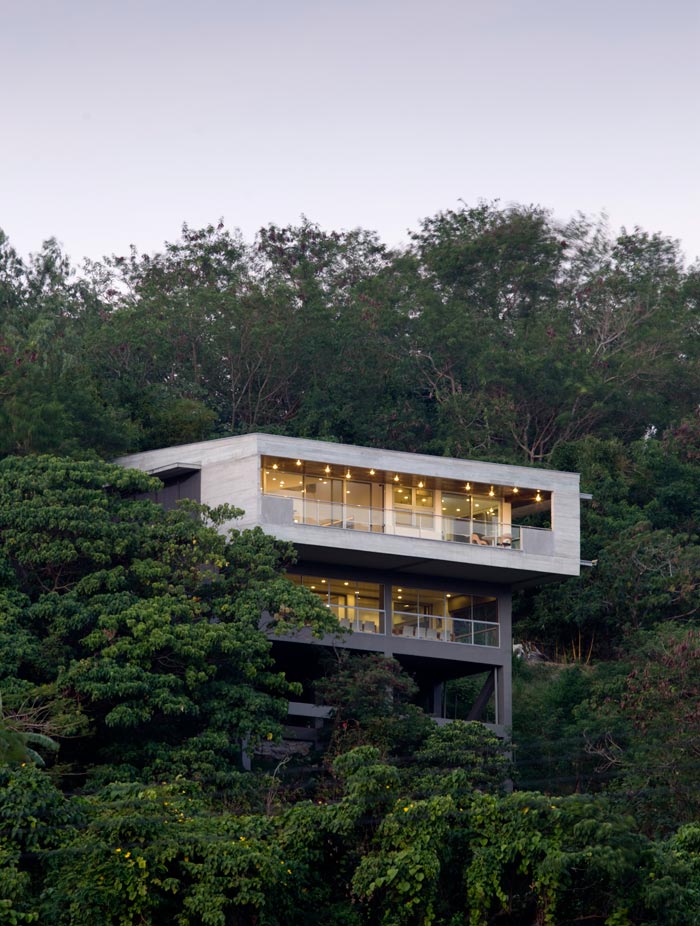
This article first appeared in BluPrint Vol 2 2014. Edits were made for Bluprint online.
Photographed by Ed Simon


